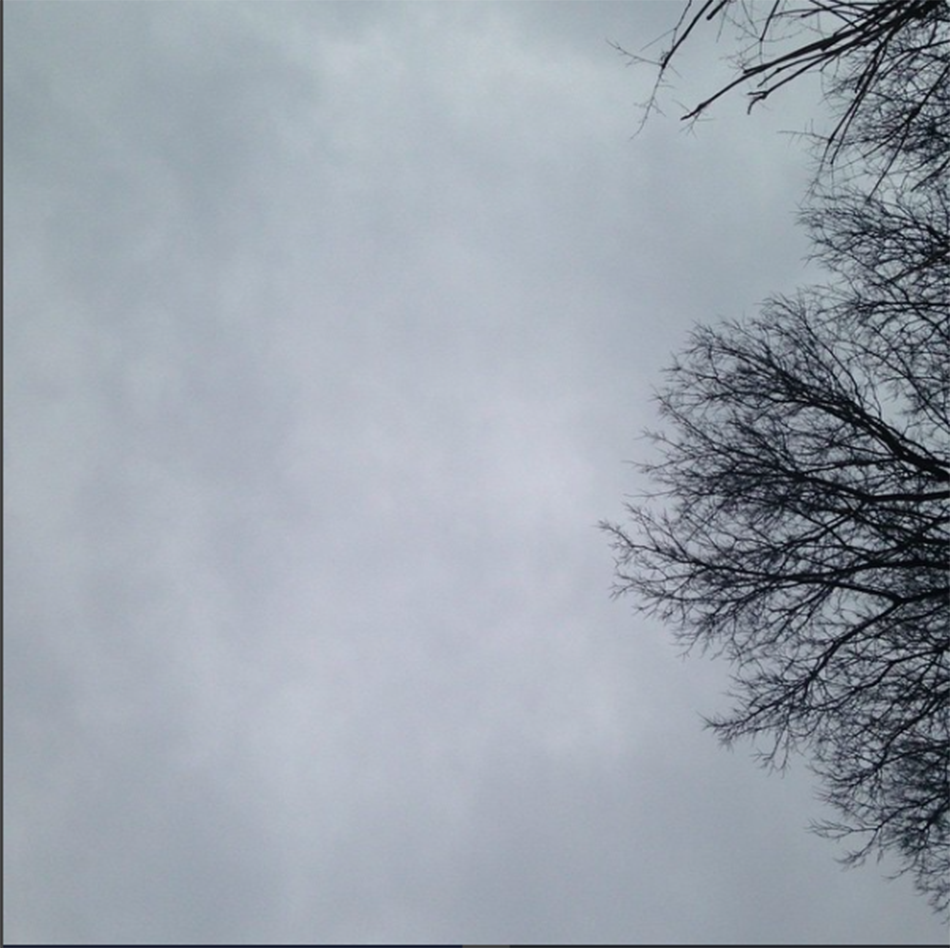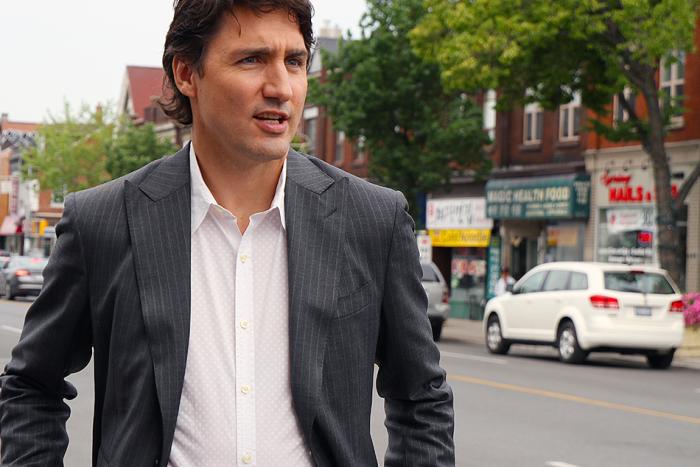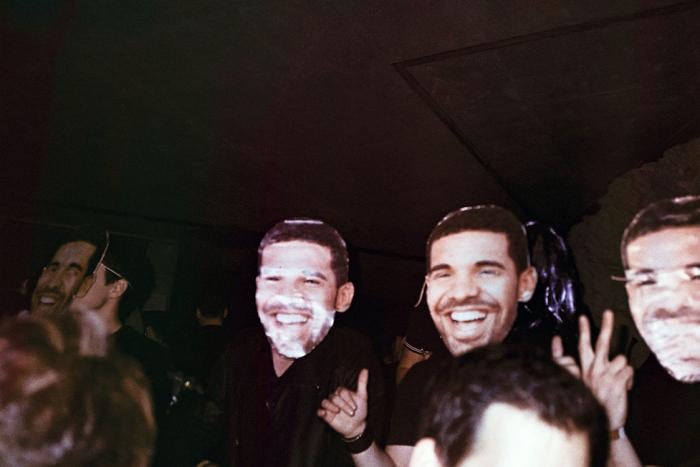What was important to us in 2015? Hazlitt’s writers reflect on the quiet reverberations of the year’s big issues, and the loud ring of its smaller ones.
In January, I took up a habit of photographing the sky. Every morning, I’d tuck pyjamas into boots and walk across the sludge-grassed backyard to a patch sporting a view without branches or power lines. And every morning the sky produced a replicate of itself, turning up small variations in texture and tone that felt less like edits towards perfection and more like shifts towards some great, soul-swallowing middle. Grey and then grey and then grey.
The homogeneity in a week’s worth of Midwestern skies is rivalled only in the unspooling of a single day—morning, high noon, and dusk bleed into one gesture, the light doled out with even but inadequate pressure. It looks a Mac putting on its tell-tale death screen. I’m documenting, I wrote on Instagram.
*
Last fall, when I arrived at The Ohio State University (note that capital-T: result of a law-enshrined, 137-year-old branding campaign), one of the first things I noticed, and wrote home to Canada about, were colours.
At any given time, I’d estimate that roughly seventy-five percent of the students crawling across the school’s flagship campus are wearing at least one piece of university paraphernalia. This has an actual, perceptible result: looking out across The Oval—an eleven-and-a-half acre quad marked by a Catherine Wheel of footpaths—you see all these bright, hard spots of red. The brain quickly recalibrates, and you come to expect it, this excess of colour. It’s a visual representation of what it means for a large group of people (university pop. 68,000) to choose the same thing. School spirit is not an idea or a feeling—it’s real. It’s red.
Recently, I boasted in a class about how I now know better: what I’m seeing isn’t red at all, but crimson, an official school colour. I repeated the word crimson several times, enjoying its regal, autumnal sound. The professor very gently told me no, I’ve got it wrong. Crimson belongs to Alabama. In Ohio, this is scarlet.
*
Scarlet and grey were adopted by The Ohio State University in 1878, the same year the university acquired it’s majuscule article. The choice was made by a committee of three students. They lost out on their first pick, orange and black, because Princeton had already called dibs. Explaining their final choice, the committee admitted that the colours have no meaning, but they looked nice and weren’t already in use.
*
Eventually, I made a new Instagram account to preserve my collection of grey skies. Shot directly from below, no angles or horizons or sunsets, just a record of a palette. Hashtag America. Hashtag nature. Hashtag beauty.

*
The Ohio State University does not have buildings: it has facilities. From the front, the main library is all stone grandeur and pillars, guarded by a larger-than-life, hulking bronze statue of a former president. From the back, the building looks like an airport, an ultra-modern expanse of glass, and inside, a cascading series of atria merge and flow into one another, edged by red, pod-like armchairs plugged into the floor.
In front of the library, there is a regular turnover of people with messages to deliver. One day, they held a dozen billboards as tall as me, covered with pictures of blood and tiny fingers and proto-spines and block letters describing these are PRE-BORN HUMANS. A lone professor stood to the side holding a piece of A4 on which she’d written Woman’s right to make choices about her health (a little wordy as far as slogans go, but I felt her effort).
By the numbers, my integration is not going well.
Are they allowed to be here? I asked her. Of course, she said. It’s state property. They have every right. But this is a university, I said. That’s a library. This is crazy. She shrugs. First amendment, she said. Oh yeah, I said, I’ve seen The West Wing.
*
One week, bits of red tape appeared all over campus, tiny dashes on buildings and signs. At first I thought they were repairs, but it became clear that there were too many and too small for this to make sense. Someone finally told me: the football game against Michigan was coming up, and they were crossing out every M on campus. I learned the hard way that you aren’t even supposed to say the word Michigan aloud, but rather the state up north. People wear T-shirts that read Muck Fichigan.
*
I moved to America in the first place because of a scare at the dentist. A long-put-off appointment turned up a mess of cavities in my lousy, prone teeth. The discovery that bits of my body were essentially rotting out of my head jostled some needs I hadn’t known I’d been sleeping on: I wanted security. I wanted to be on track towards a life where I might be able to pay professionals to put off very basic levels of human decay. As I lay in the dentist’s chair, fat-faced with aesthetic, watching dusty, burnt plumes of what used to be my molars waft, I came up with the vague notion that America would have something useful to me: funded, novel, terminal.
*
This semester, I took a line dancing class for actual university credit. The teacher wore a big, red cheerleading sweatshirt every class. She told us how her husband proposed at an Ohio State football game. One week, I overheard some classmates talking about how much a steer should cost. A few others made plans to meet up for Bible study before heading to the local country line dancing bar together. In the middle of one dance, we would all face the east wall and yell O! H! I! O!, making ourselves into the letters with our arms above our heads. This class became my favourite hour of the week.
*
The Ohio State mascot is just a man in pinstripes with a nut for a head.
*
Being Canadian in America is by far the most boring way to be foreign. It’s a form of minor but determined chafing, culture shock without the benefit of meaningful culture on either end. I feel an urge to preface everything I say with the disclaimer that I’m from elsewhere, an account for all the mistakes I’m about to make, all the ways I won’t quite line up.
It seems unfair to people who face bigger hurdles to call what I’m banging into a language barrier. But there is something there, an unevenness on the path between referents and words, a curb I keep forgetting to look out for. I can’t even name colours right.
And besides that, there’s the fact that I keeping writing colour, stubbornly bloating my words with u’s. I toggle between CBC and NPR in the morning, unable to commit. Sometimes I even listen to Radio-Canada. I don’t know what it means to adapt, but I don’t think I’m doing it right.
By the numbers, my integration is not going well. Three times this year, I have been in conflicts with friends or colleagues I don’t think I can avoid describing as fights. This is more than the total number of times I’ve fought in the last decade at least. From my childhood, I’ve accumulated a healthy roster of one-time bullies, but now, for the first time ever, I acquire an enemy. I call a close friend at home: “I think I have an enemy!” I say, laughing with horror and humiliation and maybe just a tiny bit of pride. “How is that even possible?” she asks.
When I’m polite, it comes across cold; when I overcompensate with honesty, I am cruel. I feel an enormous pressure welling under conversations, a competition for resources I’ll never really understand, a frankness about what everyone has and what they want I find stifling. Even compliments are so aggressive they read, to my Canadian sensibilities, as rude.
I keep rankling people. And I keep wishing I could have some dimension pressed out of me, compressed between the flat, Ohioan earth and that relentless sky.

Brutus, the Ohio State mascot, care of Flickr user Cindy Funk.
*
Starting at the end of August, I was charged with a class of twenty-four students, meeting three times a week to shepherd them through a mandatory first year course most would rather skip. My students were not all Midwestern, not all American, and not all under twenty-one, but the majority were at least some of these things. Rumours from other instructors had me believe that delivering the curriculum in critical thinking I’d been assigned would be something like bombing at stand-up, flinging all the best lines from my Liberal education at the Teflon of inherited, Middle-American conservatism.
This was not what happened at all. My students were some of the coolest, most surprising people I’ve ever met: a combination of high-achieving and unentitled I honestly didn’t think was possible to cultivate as a rule rather than an exception. I found them smart and curious and broad-minded, but also miraculously unbothered by the idea of being in harmony with the world around them. They were unconcerned by the idea of sharing beliefs and loves and joys with common denominators.
Most surprising to me, they seemed totally disinterested in irony, did not hold it in their hearts as a lodestar around which to gather a sense of self. And where I was prone, at the front of the room, towards impromptu, dire pronouncements of apocalypse and doom, they, in their wash of scarlet and grey, were optimistic. They were not ashamed to be joiners, to cheer for the good guys, to hope for the best.
*
Living in America, in the Midwest, in Ohio, I’ve only traded the wants that brought me here for new ones. I’ve caught this ache, a craving for immersion that’s attaching to the landscape no matter how objectively shitty that landscape is: the plasticky, fried-smelling strip of franchise commerce flanking campus; a city scarred by freeways; the mulchy, wooden eyes of foreclosed houses. I feel this urge to lick Polaroids, or maybe bathe in Instagram filters—a consumptive, rib-busting version of what should be satisfaction, but isn’t. It’s not unlike romance, or the hurt of tumbling into it: this capacious longing to be where you already are, to get what you have. I feel it in America all the time. I point the eye of my phone up to the sky, which, at this time of year, has once again turned grey, and don’t know what else to call this but love.






